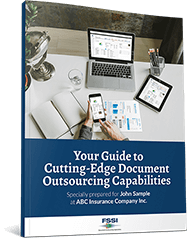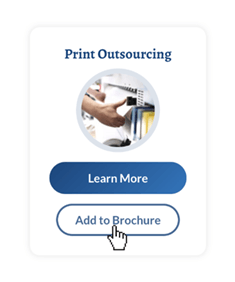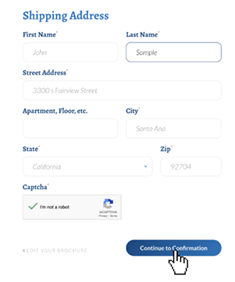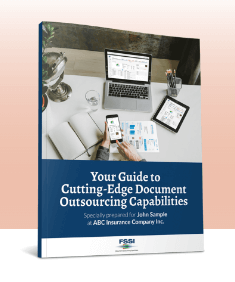How-to Guides, Postage and Mailing, Regulatory Compliance
Is Your Company Getting the Most Out of Certified Mail?
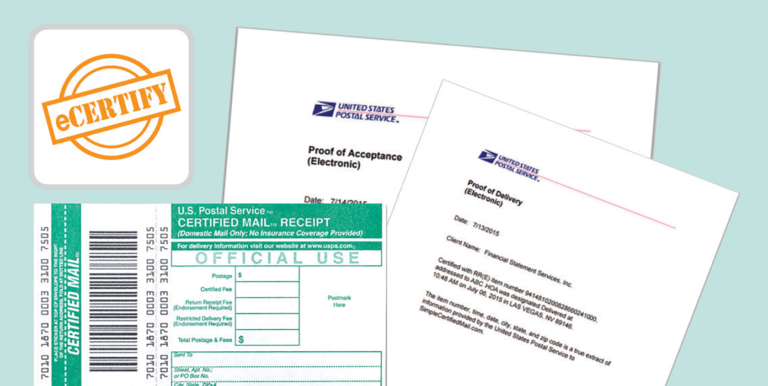
A Guide to Certified Mail from the USPS
Any company that has even mail a single letter has probably heard of certified mail. But there is a lot more that goes into Certified Mail than it appears on the surface. We put together a quick guide to help you get the most out of Certified Mail. USPS Certified Mail is one of the USPS’s useful tools. We are going to define certified mail, explain who uses certified mail, explain the difference between Certified Mail and Registered Mail, and the benefits of using certified mail.
What is Certified Mail?
Certified Mail is exclusive to The United States Postal Service. It refers to important, time-sensitive, documents and materials requiring tracking and secure delivery. Certified Mail provides proof of mailing and a record of delivery. Only First-Class Mail or Priority Mail can be sent as Certified Mail. Additionally, the service is only available for delivery within the United States. There are many benefits of certified mail. But let’s start with who uses certified mail.
Who Uses Certified Mail?
Any person can send Certified Mail. However, due to business and regulatory reasons, many companies deal with Certified Mailing. Certified mail offers companies proof of mailing, secure delivery, as well as archival proof of delivery.
What is the Difference Between Registered and Certified Mail?
The main difference between certified mail and registered mail is the way that the USPS treats each mail piece from a mail handling perspective. This also includes the level of security used to protect from loss, damage or theft.
Is Certified Mail Worth the Added Cost?
Certified mail offers added assurance and security for sensitive documents. It also is a great postage solution for time-sensitive documents that require both proof-of-mailing and delivery. Certified mail can be costly, but worth it for important documents where mistakes could cost even more. We put together this guide to show you how USPS Certified Mail works so you don’t make any costly postage mistakes.
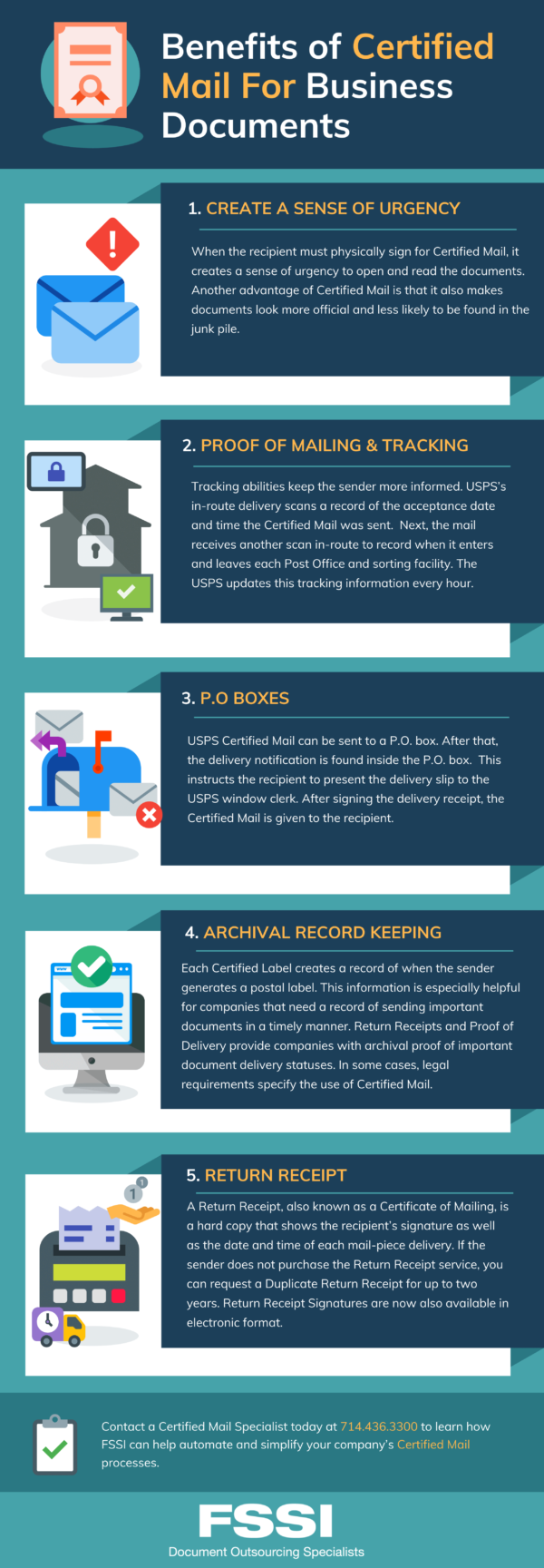
Benefits of Certified Mail
Create a Sense of Urgency
When the recipient has to physically sign for Certified Mail, it creates a sense of urgency to open and read the documents. Another advantage of Certified Mail is that it also makes documents look more official and less likely to be found in the junk pile.
Mailpiece Tracking
Tracking abilities keep the sender more informed. USPS’s in-route delivery scans a record of the acceptance date and time the Certified Mail was sent. Next, the mail receives another scan in route to record when it enters and leaves each Post Office and sorting facility. The USPS updates this tracking information every hour.
P.O. Boxes
USPS Certified Mail is sent to a P.O. box. After that, the delivery notification is found inside the P.O. box. This instructs the recipient to present the delivery slip to the USPS window clerk. After signing the delivery receipt, the Certified Mail is given to the recipient.
Records for Archival
While many individuals can benefit from the archival ability of Certified Mail it is particularly beneficial for most companies. Many companies use Certified Mail services for important communication. Each Certified Label creates a record of when the sender generates a postal label. This information is especially helpful for companies who need a record of sending important documents on time. Return Receipts and proof of delivery provide companies with archival proof of important document delivery statuses. In some cases, legal requirements specify the use of Certified Mail.
What Makes USPS Certified Mail Different than Regular Mail?
Proof of Mailing
When sending Certified Mail, the sender must fill out a Certificate Mail Form. The form has a perforated receipt, which acts as a legally recognized proof of mailing receipt. USPS assigns a unique tracking number to each Certified Mail piece and provides a signed record of delivery. The USPS collects and stores signatures electronically for two years. This is one of the major benefits of certified mail.
Return Receipt
In many cases, senders can purchase a Return Receipt for an additional fee. A Return Receipt, also known as a Certificate of Mailing, is a hard copy that shows the recipient’s signature as well as the date and time of each mail-piece delivery. If the sender does not initially purchase the Return Receipt service, you can request a Duplicate Return Receipt for up to two years.
Return Receipt Signatures are now also available in electronic format. The electronic PDF files are quickly replacing hard copies. This is because electronic PDF files are easier to administer, cost less to mail, and are easier to store. Ultimately, this makes them much harder to lose. The PDF format can also easily be emailed or shared. Copies of each Certified Mail transaction including the Electronic Delivery confirmations and Electronic Return Receipt PDF files are stored for 10 years at no additional charge.
USPS Mailing Terms Glossary
We put together a massive glossary of terms used in the mailing industry. We define USPS postal terms and acronyms; we explain postal service levels and more. Check out the Glossary of USPS Mailing Terms here.
eCertify – FSSI’s Electronic Certified Mail Solution
Take advantage of the Benefits of Certified Mail. We’ve made the process simpler with eCertify. This certified mail tool is an electronic method developed by FSSI for current and prospective clients. A challenge concerning the traditional method for Certified Mail is receiving hard copies of important documents. This includes the Proof of Mailing and Return Receipts.
Hard copies can be difficult to manage and oftentimes difficult to find. FSSI simplifies the mailing process by creating and printing the required labels from client print files in line with the document to be mailed. We insert the document and labels into specially marked certified envelopes. They then move on to USPS delivery. We post Electronic Delivery Confirmation and Return Receipt Signature online within hours of receiving a signing for a document. We can also transmit this same information for upload into clients’ in-house archival systems.
Benefits of eCertify
- Greater efficiency and productivity — Upon receipt of the Certified Mail by the USPS, a Proof of Acceptance document and tracking of the mailpiece throughout the USPS system is available in FSSI’s eCertify reporting. Conveniently, eCertify replaces the burdensome process of manually creating, managing and archiving the physical return of Return Receipts and Proof of Acceptance forms
- Single vendor simplicity — FSSI handles all mail. This provides greater accountability and integrated reporting.
- Business process support — eCertify electronically posts and archives Return Receipt information within hours of mail delivery.
- Considerable savings potential — The eCertify service reduces costs associated with postal fees, label preparation, and physical Return Receipt storage and retrieval.
Built-in Accountability Reporting
Through workStreamOne™, FSSI’s Online Job Tracking and Reporting tool, proof of delivery information and USPS mailpiece tracking and reporting are accessible online by authorized users, 24/7. Comprehensive eCertify reports detail the name and address of each recipient. Reports also include the USPS tracking information and Tracking Number, and the final delivery date.
Contact us to learn how FSSI can help automate and simplify your company’s Certified Mail processes. Take advantage of the benefits of certified mail. Contact a Certified Mail Specialist today at 714.436.3300.

